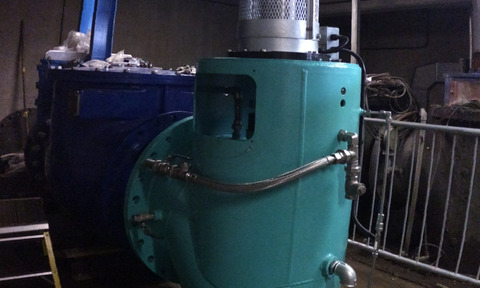Storm pumps ensure pump station functions in all weathers
3 Dec 2018

It may not be grim up North but it certainly rains more in Yorkshire than many other areas. That puts more pressure on pumping stations – Bedford Pumps was prepared.
Yorkshire Water has a substantial geographical remit, covering the majority of England’s largest county as well as parts of neighbouring Derbyshire and Lincolnshire.
Serving more than 2.3 million householders and in excess of 130,000 business customers, it is responsible for numerous reservoirs and in recent years assumed control for tens of thousands of kilometres of private sewers and private pumping stations in addition to its previous existing assets.
With an average annual rainfall of more than 1000mm, rising to 1500mm in parts of the Pennines, Yorkshire is no stranger to the dangers of flooding. Heavy rainfall can have a significant impact on the sewerage network often resulting in intermittent discharges of diluted sewage during and after storm conditions.
Storm pumps are frequently installed in wastewater pumping stations to ensure ensure that, during times of heavy rainfall, a greater amount of stormwater can be safely taken away from homes in the surrounding area.
A cornerstone of Yorkshire Water’s infrastructure investment is the firm’s commitment to ensuring its pumping stations could keep up with changing demands including those arising from rainfall.
Bedford designed a pump to suit the structure, without losing any performance or hydraulic efficiency
One such case was the Elland Lowfield pumping station south west of Bradford. As well as the usual requirements of handling solids, grits and rags, the site had to contend with some additional challenges. The existing structure proved problematic as the opening for the pumps was too small for the increased duty requirements.
Rain-ready
The utility company consulted Bedford Pumps for a solution. Bedford used their engineering expertise to design a pump to suit the structure, without losing any performance or hydraulic efficiency. This would negate the need for additional civil work, with the objective of saving substantial capital cost.
In addition, prior to pump installation, sole plates were installed eliminating the requirement for levelling on initial or subsequent maintenance installations, as well as conforming to gas tight sealing requirements.
Given that waste water storm pumps need to perform when required or there is a real possibility of raw sewage overflowing the station and flooding residential/business areas, longevity was a key product requirement.
Due to the critical nature of the storm pumps, Bedford Pumps designed and supplied them with shaft enclosing tubes, ensuring the critical water lubricated bearings did not suffer premature failure due to running in waste water.
A separate flushing system was also supplied comprising: duty and standby pumps; a control panel; all necessary valves; fittings and flow switches mounted on a common base skid.
Another area of concern on waste water applications are the mechanical seals. If the liquid is clean it is normal to use the pumped liquid to provide the lubrication, however, in the case of storm pumps in a WwTW, the pumped liquid is contaminated and therefore not a desirable liquid to lubricate the seal faces.
To overcome this problem Bedford Pumps supplied the products with double seals using a siphon system, ensuring a clean flow of liquid is seen by the mechanical seal faces thus ensuring the max MTBF for the mechanical seals.

